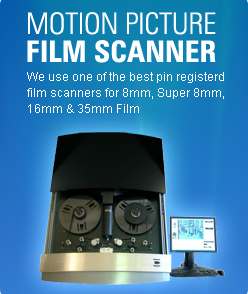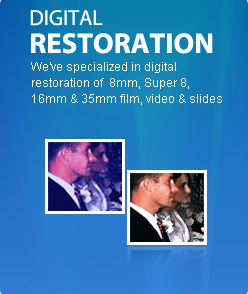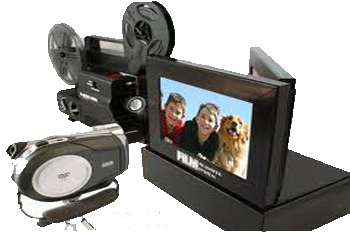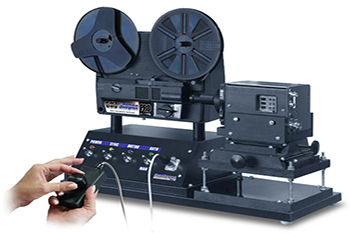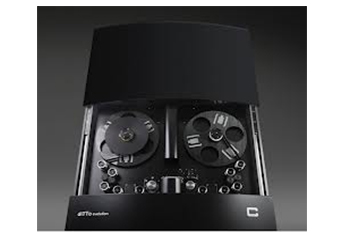
Film Conversion Equipment
Film Scanning and Film Transfer Equipment Types
The type of film scanning machine used for your 8mm, Super 8 or 16mm film conversion will have as much of an impact on the quality you receive as the resolution of the scan itself will. For example, if you wanted to digitize a photograph and tried doing it two different ways. You first put the photograph down on a table and took a picture of it using your smart phone or camera. Then you took the picture and scanned it using a flatbed scanner. If you compare the two side by side on your computer it will become really obvious that the flatbed scanner produced a digital image as good as the photograph. However, the picture you took with your phone or camera does not look close to the quality of the original photograph.
The same goes for scanning your 8mm, Super 8 or 16mm film. The real-time and frame by frame machines below are using a camcorder to take a picture of your film. The motion picture film scanner and Datacine machine are scanning the film. The results will be significantly different.
Film Conversion Equipment |
|
Real Time
|
|
Frame by Frame
|
|
Professional Film Scanners
|
|
So, at this point you’ve learned that film transfers can capture at standard definition (480 lines), high definition (1080 lines) or 2K (1556 lines). You’ve also learned about the 3 different types of film transfers being used today. In order from least to best quality we have:
Pembroke Pines Fun Facts: Pembroke Pines is the second largest city in Broward County and the ninth largest city in Florida. Pembroke Pines residents have easy access to Port Everglades, the second busiest cruise port in the world, the Port of Miami, the Fort Lauderdale-Hollywood International Airport, and the Miami International Airport. Major highways in and around Pembroke Pines include: US 27 which gives access to the center of the state and Lake Okeechobee areas, the Florida Turnpike, and I-75. Incorporated in 1960, Pembroke Pines is a city located in southeast Broward County on Florida's southern Atlantic CoaSt Pembroke Pines is twenty minutes south of Fort Lauderdale, and twenty five minutes north of Miami.
Florida Fun Facts: In the 20th century, tourism became Florida’s leading industry and remains so today, attracting millions of visitors annually. Florida is also known for its oranges and grapefruit, and some 80 percent of America’s citrus is grown there. Florida, which joined the union as the 27th state in 1845, is nicknamed the Sunshine State and known for its balmy climate and natural beauty. Spanish explorer Juan Ponce de Leon, who led the first European expedition to Florida in 1513, named the state in tribute to Spain’s Easter celebration known as “Pascua Florida,” or Feast of Flowers.
